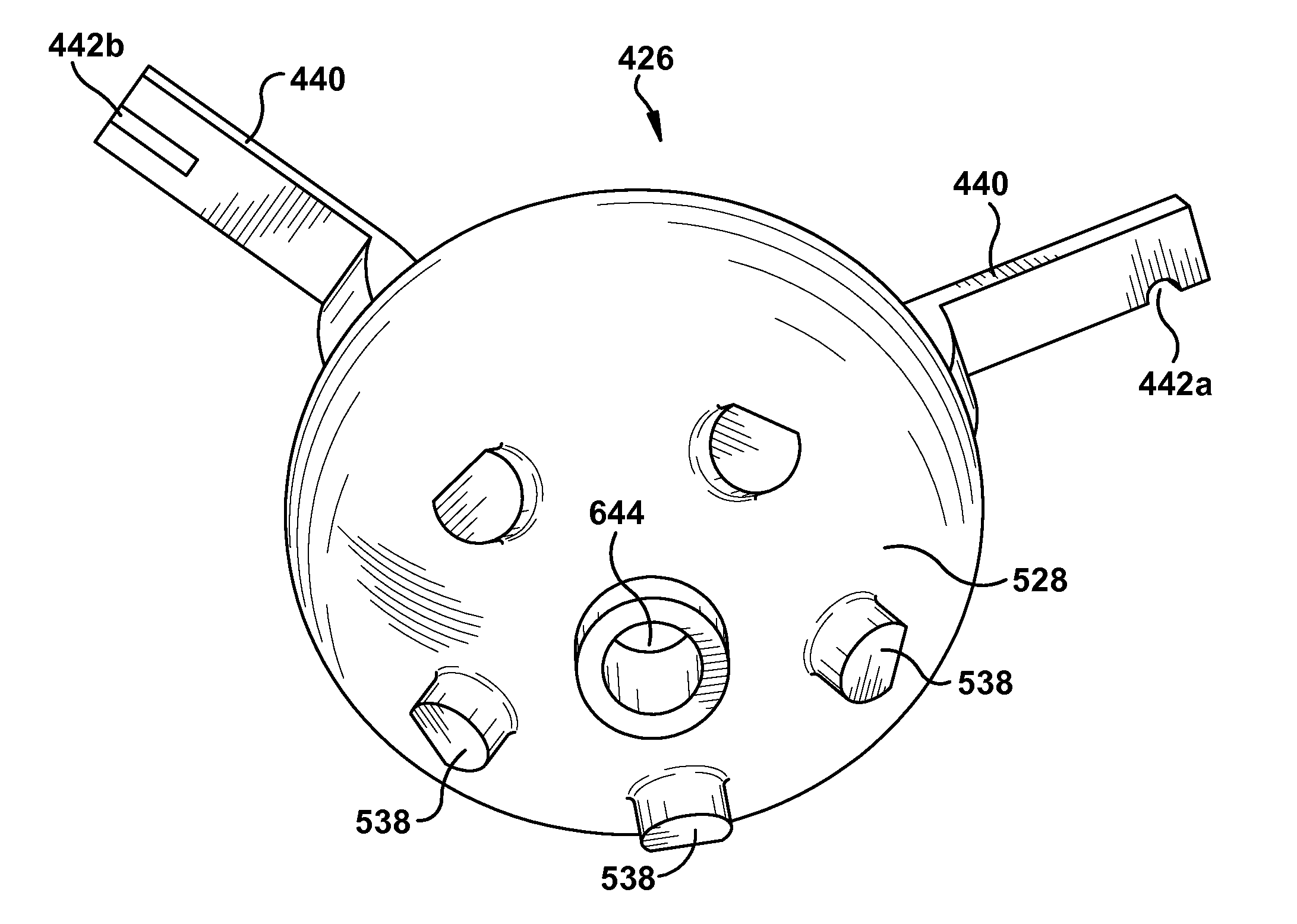System and method for assisting with attachment of a stock implant to a patient tissue
a technology of surgical guide and patient tissue, which is applied in the field of system and method for assisting with the attachment of a stock implant to a patient tissue, can solve the problems of bone deformation, end up deteriorating, and further erosion,
- Summary
- Abstract
- Description
- Claims
- Application Information
AI Technical Summary
Problems solved by technology
Method used
Image
Examples
first embodiment
[0047]To aid with carrying out a preoperative plan for attaching a stock prosthetic implant to a patient tissue, a guide 426 may be provided, according to the present invention. The guide 426, shown in various optional configurations in FIGS. 4-10, is at least partially custom-manufactured for a particular patient responsive to preoperative imaging of the patient tissue. For example, the guide 426 may be wholly custom-made (e.g., using rapid prototyping techniques) or may be modified from a stock guide or guide blank (not shown). It is contemplated that at least a part of the guide 426 is a patient-specific, single-use, bespoke feature suited only for use at the indicated surgical site, though one of ordinary skill in the art could create a guide (not shown) which uses a patient-specific “disposable” structure connected to a stock, generic “reusable” carrier.
[0048]Regardless of the whole / partial custom manufacture status, the guide 426 may be configured responsive to at least one of...
second embodiment
[0088]A guide 426′ for use with the glenoid implant 2364 is shown in FIGS. 25-27. As can be seen in FIG. 26, the guide 426′ includes a central protrusion 2670 configured to nest into the shaft aperture 2368 of the glenoid implant 2364. In the second embodiment, the fastener apertures 220′ of the glenoid implant 2364 also serve to accept the locating protrusions 538′ of the guide 426′, which surround each of the fastener apertures, as shown. The fastener apertures 220′ are optionally countersunk to accept the locating protrusions 538′. When a countersunk fastener aperture 220′ is provided for a locating protrusion 538′, whether the countersunk feature is added by the user or originally provided by the implant manufacturer, the countersunk portion might also or instead be used to accept a fastener head 2160′ to provide a smooth upper implant surface 222′ with no protruding fastener heads when securement of the glenoid implant 958 to the patient tissue is complete. With reference to FI...
PUM
 Login to View More
Login to View More Abstract
Description
Claims
Application Information
 Login to View More
Login to View More - R&D
- Intellectual Property
- Life Sciences
- Materials
- Tech Scout
- Unparalleled Data Quality
- Higher Quality Content
- 60% Fewer Hallucinations
Browse by: Latest US Patents, China's latest patents, Technical Efficacy Thesaurus, Application Domain, Technology Topic, Popular Technical Reports.
© 2025 PatSnap. All rights reserved.Legal|Privacy policy|Modern Slavery Act Transparency Statement|Sitemap|About US| Contact US: help@patsnap.com



